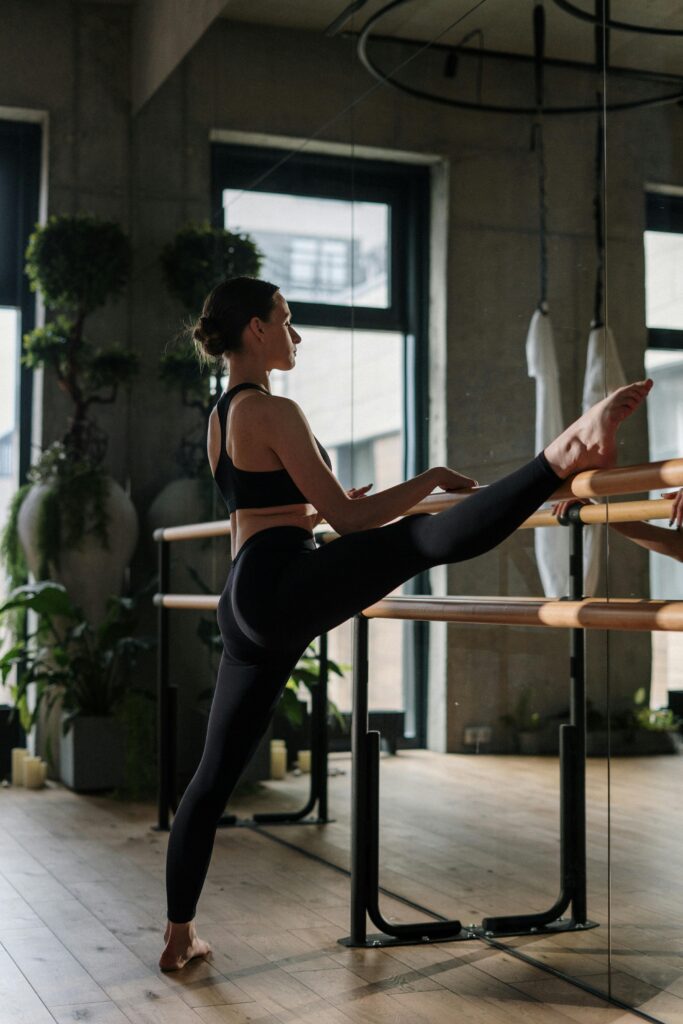
In the vibrant tapestry of women’s lives, from chasing toddlers to conquering marathons, maintaining physical health is paramount. While the demands on our bodies are diverse, one constant remains: the potential for injury. For women, understanding and actively engaging with stretching and mobility isn’t just about athletic performance; it’s about fostering a resilient body capable of navigating daily challenges, minimizing pain, and embracing a full, active life. These two often-intertwined yet distinct components are crucial for injury prevention, offering specific benefits tailored to women’s unique physiological needs.
Let’s first clarify what we mean by these terms, as they’re frequently used interchangeably but hold different meanings.
Stretching is the deliberate elongation of muscles and tendons, aiming to increase flexibility the passive range of motion around a joint. Think of it as improving the “give” in your tissues. For women, who often experience hormonal fluctuations affecting ligamentous laxity (especially during pregnancy and postpartum), mindful stretching becomes even more vital. We typically encounter a few types:
Static Stretching: This involves holding a stretched position for 20-30 seconds at the point of gentle tension. It’s best done after a workout or as a dedicated flexibility session. For women, incorporating static stretches can help address common areas of tightness like the hamstrings (often shortened from prolonged sitting), hip flexors, and pectorals (which can become tight from breastfeeding or desk work), preventing postural imbalances.
Dynamic Stretching: This involves moving a body part through its full range of motion. Think arm circles, leg swings, or torso twists. Dynamic stretching is an excellent warm-up before any activity, preparing your muscles and joints for movement. For women juggling busy schedules, these quick movements can activate muscles and improve blood flow, making everyday tasks feel smoother and less prone to strain.
Proprioceptive Neuromuscular Facilitation (PNF) Stretching: A more advanced technique, PNF often involves alternating passive stretching with isometric contractions. While highly effective for significant flexibility gains, it might require a partner or professional guidance.
Optimized Pelvic Alignment: Regular stretching can alleviate tightness in muscles surrounding the hips and pelvis, contributing to better pelvic alignment. This is incredibly important for women, impacting everything from low back pain to core stability, and even aiding in a more comfortable pregnancy and delivery.
Reduced Muscle Soreness and Recovery: Post-exercise stretching can help reduce muscle stiffness and improve blood flow, aiding in quicker recovery from workouts and daily physical demands. For women who are often primary caregivers, managing housework, and working, efficient recovery means less downtime.
Addressing Postural Imbalances: Women are often prone to certain postural imbalances due to factors like carrying bags, prolonged sitting, or even breast development. Stretching can counteract these tendencies, preventing rounded shoulders, forward head posture, and associated neck and back pain.
Preparation for Life’s Demands: From bending down to pick up children to reaching for items on a high shelf, increased flexibility makes these everyday movements less strenuous and less likely to cause a strain or sprain.
While flexibility focuses on the range of motion, mobility is about the ability of a joint to move actively through its full range of motion with control. It’s the difference between being able to touch your toes (flexibility) and being able to perform a deep, controlled squat with proper form (mobility). Mobility requires a blend of:
Enhanced Functional Movement: Good mobility allows for more efficient and biomechanically sound movement patterns in daily activities and exercise. For instance, being able to engage your glutes and maintain a neutral spine during lifting (whether it’s a child, groceries, or weights) significantly reduces stress on your lower back.
Improved Core and Pelvic Floor Function: Mobility in the hips and thoracic spine directly impacts the function of the core and pelvic floor. For women, especially those postpartum or experiencing pelvic floor dysfunction, improved mobility can aid in rehabilitation and injury prevention by allowing these crucial muscle groups to work optimally.
Greater Stability and Balance: When joints can move freely and are supported by strong, engaged muscles, they become inherently more stable. This translates to better balance, reducing the risk of falls a concern that often increases with age.
Reduced Compensatory Patterns: If one joint lacks mobility (e.g., stiff ankles), your body will often compensate by forcing movement from another area (e.g., knees or hips), leading to overuse injuries. By improving overall mobility, you minimize these risky compensatory patterns.
Supporting Hormonal Changes: As women navigate different life stages with varying hormone levels, our connective tissues can be affected. Prioritizing mobility helps maintain joint health and resilience, adapting to these changes and reducing susceptibility to strains and sprains.
It’s clear that stretching and mobility are not mutually exclusive; they are profoundly synergistic. You might be flexible, able to stretch far, but lack the strength and control to move effectively through that range meaning you have flexibility without true mobility. Conversely, excellent mobility inherently implies good flexibility, as you can’t move through a full, controlled range without adequate tissue length.
For women, integrating both means building a body that is not only pliable but also robust and responsive.



To effectively prevent injuries and optimize your physical well-being, a balanced and consistent approach is key:
Start Your Day (or Workout) with Dynamic Mobility: Before diving into your fitness routine or even just tackling your morning chores, perform dynamic stretches and mobility drills. Focus on movements that warm up the hips, spine, and shoulders areas often stiff from sleep or prolonged sitting. Think gentle cat cow stretches, hip circles, or arm swings.
Cool Down with Static Stretching: After your exercise session or at the end of a long day, dedicate 10-15 minutes to static stretches. Hold each stretch for 20-30 seconds, focusing on major muscle groups that feel tight. This can also be a wonderful moment of mindfulness and relaxation.
Dedicated Mobility Sessions: Consider adding dedicated mobility work to your weekly schedule. Practices like yoga, Pilates, or specific functional mobility classes are excellent for building both flexibility and controlled strength. Many online resources offer fantastic routines tailored for women’s health needs, including pelvic floor considerations.
Listen to Your Body’s Wisdom: Women are often adept at tuning into their bodies. Pay attention to areas of tightness, discomfort, or restricted movement. Never push into sharp pain during stretching or mobility work. Discomfort is normal; pain is a signal to ease off.
Consistency is Your Best Friend: Just like healthy eating or regular exercise, consistency in your stretching and mobility work will yield the best long-term results in injury prevention. Even short, daily sessions add up!
Prioritize Pelvic Health: Integrate specific exercises that support pelvic mobility and stability. This might include hip internal/external rotations, pelvic tilts, and gentle core engagement exercises, all crucial for women’s long-term health and injury prevention.
By actively investing in both stretching and mobility, women can empower their bodies to move with greater ease, strength, and resilience. This isn’t just about avoiding setbacks; it’s about unlocking your full potential to live an active, pain-free life, capable of meeting every challenge with grace and strength. Your body is an incredible instrument nurture its ability to move, and it will serve you beautifully through every stage of your journey.

SatynMag empowers women with inspiring stories, expert advice, and uplifting content to fuel their strength and dreams
Welcome to Satynmag S Suite, online knowledge platform for career and personal growth. This is where you can empower yourself with cutting edge knowledge, latest know-how and grow.


